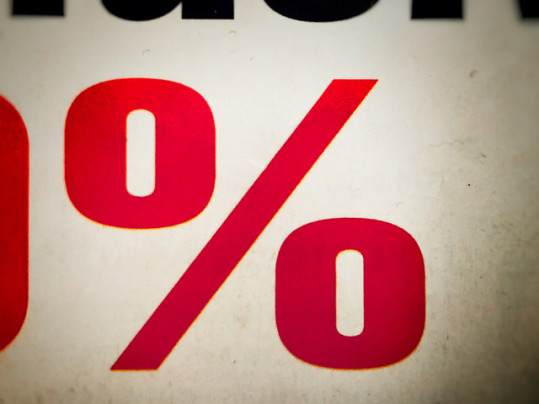In early spring, when coronavirus shutdowns began, few would’ve predicted that the summer housing market would be as hot as it turned out to be. Buyer demand rebounded quickly and home sales numbers surpassed year-before levels sooner than anyone could’ve expected. However, though the housing market’s rebound is undoubtedly good news, there is another side to the story. Put simply, home buyers returned to the market before sellers and the resulting imbalance drove already low inventory levels even lower. And naturally, fewer homes for sale combined with an increasing number of interested buyers put upward pressure on home prices. In fact, according to one recent analysis, the shortage of homes for sale caused a 0.7 percent price increase month-over-month in August. That might not seem like much, but it’s actually the largest monthly gain in seven years. It was also pretty evenly spread, with 48 of the 50 largest markets showing accelerating home prices during the month. Fortunately, for home buyers, mortgage rates remain near record lows, which helps to counteract the spike in prices. Also, home builders have begun to ramp up construction, which will should help bring some relief to markets suffering from a lack of homes for sale. (source)
Archive for September 2020
Home Builder Confidence Hits An All-Time High
New residential construction is vital to keeping the housing market balanced. After all, there’s no easier way to increase the number of homes for sale than to build more homes. And, in today’s market, where inventory is low and demand is high, new home construction is more important than ever. If home builders build enough homes to narrow the gap between supply and demand, it’ll help give buyers more choices and keep prices from rising too quickly. That’s why the National Association of Home Builders’ monthly measure of home builder confidence is a closely watched barometer. In September, their Housing Market Index hit its highest point in the survey’s 35-year history. The index scored an 83 on a scale where any number above 50 indicates more builders view conditions as good than poor. Robert Dietz, NAHB’s chief economist, says demand is high and moving to the suburbs. “The suburban shift for home building is keeping builders busy, supported on the demand side by low interest rates,” Dietz said. If the current trend continues, it could lead to a better balanced market and improved affordability conditions for buyers. (source)
Rates Unchanged, Still Near Record Lows
According to the Mortgage Bankers Association’s Weekly Applications Survey, average mortgage rates were mostly flat last week, with little change seen for 30-year fixed-rate mortgages with conforming and jumbo balances, loans backed by the Federal Housing Administration, and 15-year fixed-rate loans. But though rates remain near record lows, overall mortgage demand fell, with most of the decline due to a drop in refinance activity. Joel Kan, MBA’s associate vice president of economic and industry forecasting, said refinance demand may be slowing but purchase applications are still strong. “With the flurry of refinance activity reported over the past several months, demand may be slowing as remaining borrowers in the market potentially wait for another sizeable drop in rates,” Kan said. “Applications to buy a home also decreased last week, but the underlying trend remains strong. Purchase activity has outpaced year-ago levels for 17 consecutive weeks, with a stronger growth in loans with higher balances pushing MBA’s average loan size to a new survey high of $370,200.” The MBA’s weekly survey has been conducted since 1990 and covers 75 percent of all retail residential mortgage applications. Last week’s results contained an adjustment for the Labor Day holiday. (source)
Mortgage Credit Gets Tighter In August
Lending standards change. That’s why the Mortgage Bankers Association’s monthly Mortgage Credit Availability Index tracks how easy or difficult it currently is for borrowers to secure financing. Any increase in the index indicates that credit has become more available, while decreases mean standards have tightened. In August, the index fell 4.7 percent. Joel Kan, MBA’s associate vice president of economic and industry forecasting, says economic uncertainty continues to affect lending standards. “Credit continues to tighten because of uncertainty still looming around the health of the job market, even as other data on loan applications and home sales show a sharp rebound,” Kan said. “A further reduction in loan programs with low credit scores, high LTVs, and reduced documentation requirements also continued to drive the overall decline in credit availability.” The index was benchmarked to 100 in March 2012. Currently, it is at 120.9, which is its lowest level since March 2014. (source)
New For-Sale Inventory Sees Improvement
There’s currently an imbalance in the housing market. The number of interested home buyers far exceeds the inventory of homes for sale. That means, listings sell quickly, home prices rise, and prospective home buyers have to compete with other buyers for available homes. The lack of homes for sale also holds back home sales and makes things more difficult for first-time buyers looking for an affordable house to purchase. In short, low inventory is the housing market’s primary issue, and it’s only gotten worse since the coronavirus pandemic began in March. However, there is some good news, and it could mean a better balanced market is on the horizon. That’s because, according to one recent analysis, new for-sale inventory is up 16.2 percent month-over-month and is now at its highest level since March 22. The improvement is an indication that more homeowners now feel that it’s a good time to sell. And, if the trend continues, it could mean some relief for buyers, as it would lead to better affordability conditions, a slower market, and more chances to find a home that suits their needs. (source)
Will The Fall Housing Market Cool Buyer Demand?
Spring and summer are the busiest seasons for the housing market. Home buyer demand ramps up in March and doesn’t typically start falling until after Labor Day. But this year is far from typical. And with buyer demand running well above last year’s pace, it’s natural to wonder what the fall housing market will look like. Will it be as competitive as the summer market or will it cool off like it usually does? Well, according to a new report from the National Association of Realtors’ consumer website, it may be more normal than you’d think. That’s because their most recent Housing Market Recovery Index – which tracks the market’s rebound since the coronavirus’ onset – found a slight dip in home buyer demand at the beginning of September. At the same time, the index found the inventory of homes for sale improved. The data is a hopeful sign for buyers that things may be trending in a more normal direction. If buyer demand continues to cool, it could mean a slower fall market with less competition and more homes to choose from. However, though encouraging, it’s too soon to say whether or not the numbers are anything more than a small bump in the long-term trend. (source)
How Remote Work Could Boost Homeownership
When the coronavirus took hold in March it required a lot of adjustments. Everything from how we shop for groceries to how we socialize underwent an instant change. The way we work was among the biggest changes. Many Americans, who once commuted to-and-from the office every day, transitioned to working from home full-time. Now, six months later, it seems likely that remote work is here to stay, at least for some. But what might that mean for the housing market? Well, according to one new analysis, it could mean an opportunity for millions of renters to become homeowners. That’s because, in many markets, renters can’t afford to buy. In fact, priced-out renters make up 4.5 percent of all renting households. But, if those renters could live further from their workplace, they’d have an opportunity to buy a home in a more affordable area outside the city. The analysis found that this could apply to as many as 2 million current renters. However, since work isn’t the only factor deciding where we live, only time will tell how many Americans will actually make the move. (source)







